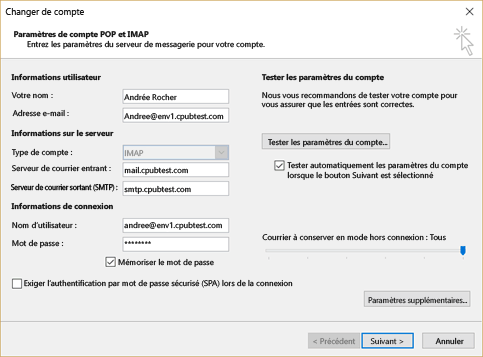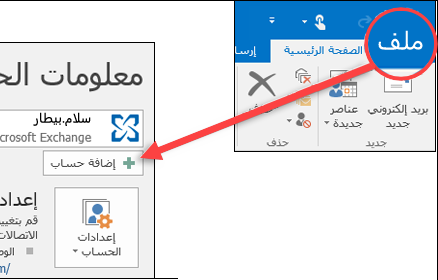For those with UNIX or Apple Mac operating systems, Microsoft has developed OWA 2010 Light to enable users to access their corporate email stored on Exchange Server 2010. Microsoft has pulled off the amazing feat of reproducing the experience of the desktop version of Outlook 2010 in a browser. Set up Exchange account access using Mac OS X 10.10 or later. If you're running Mac OS X version 10.10 or later, follow these steps to set up an Exchange email account: Open Mail, and then do one of the following: If you've never used Mail to set up an email account, the Welcome to Mail page opens. If you've used Mail to create. Sometimes the mail client will accept your settings and declare the setup done, even though there is something missing. Then you will experience a strange behavior of your mailbox – it will receive but not send messages or vice versa. Open the mail client (Mac Mail /Mail.app). At the top follow “Mail” “Preferences”. Mark mentioned using Mac Mail with Exchange 2010, where exchange was hosted by intermedia. This is supported, and does use EWS. Their connection instructions are here: Setup Instructions For MacMail On Snow Leopard Mac OS X. I have a network with windows mail and Server 2010 SP3 and exchaneg the latest rollup (updated last week). A user to decide to take a MAC (latest version) and a pack for office MAC (2011) Unable to connect their Outlook or Mail for Exchange 2010 software. The client has an AD domain different from its mail.
Tech Tip: Work on your windows compatible monitoring software with SharePoint or Exchange Add-on using cloud based virtual desktops accessible remotely from your (PC/Mac/iOS/Android) devices with CloudDesktopOnline.com and get complete access to MS office on the same desktop by visiting O365CloudExperts.com powered by Apps4Rent.
There are times when it can be useful and beneficial to have a good grasp on the details of what kind of mail traffic is running through your Exchange environment. Recently I have been tasked with coming up with some environmental statistics for our Exchange 2010 servers to help size a new project we are starting soon. There are a few different tools to help gather this information that I’d like to briefly go over today. Before I start I’d like to point out that most of this stuff I am borrowing from others, however I think it is valuable to know how to do this type of thing. With that said, I’m definitely not trying to take credit for any of these techniques, just trying to show the benefits.
There are a few different tools that will help to get a handle on your Exchange environment. The first and quickest way to peer into your Exchange environment for some quick high level overview statistics is to use PowerShell.
The following command can be used to grab some basics statistics such as the total mailbox size, average mailbox size, the max and the minimum sizes in your environment.

It is important to note however that this command can take some time to complete and can be an intensive process because there are so many calculations going on, just be careful that you don’t crash anything. This command may not be viable if the environment is enormous but if that is the case you probably don’t need to use any of these techniques anyway.
The next useful tool to gather up mail flow information uses the Microsoft Log Parser tool, which can be downloaded here. The log parser basically allows us to query the Exchange message transport logs to pull out interesting information. I found a great blog post that describes the process of using the log parser tool to query the message tracking logs to help determine daily send and receive traffic in your Exchange environment. You can find the blog post here and I have it reference at the end of this article as well.
There are a few tricks however that I would like to mention because a few things in the blog post aren’t exactly obvious. After downloading and installing the Log Parser you must run the command he has listed on his site using CMD, otherwise you will have to modify his commands to use PowerShell.

For this command to work correctly you must also navigate to the correct location where the transport logs are being stored. In the default install of Exchange they are stored in:
So after you navigate to the correct location you run the command:
This will output the total number of send/receive messages for each date for the last 30 days on that particular server. Another important thing to keep in mind is that you need to run this command on each server that has either the Hub Transport or Edge Transport role installed because each server houses a unique set of log files.
The last technique I’d like to go over for gathering interesting Exchange mail flow information is a script I found online, which can found here. This is a very robust script that gathers a lot of specific information for a particular set of logs files. Essentially this script functions similarly to the above Log Parser, except it grabs a lot more detail for a particular date.
This is easy to get working, just copy the script from the link into a .ps1 file and save it to a server that has the Exchange Management Shell installed on it. If the EMS is not installed then this script will not function correctly. The script will output some interesting details for each individual user including things like:

Exchange Mail Sign In
- Username
- Messages sent/received
- Total MB sent/received
- Internal sent/received stats
- Unique messages sent

And output this information into a CSV file so it easy to manipulate the data at that point. This kind of stuff is very useful in helping to determine things like average sent and received message size for example, I have not been able to provide that information to management easily until I found this script.

There are more techniques out there I’m sure, maybe even software that helps gather these sorts of stastics and information but for a quick and dirty way to grab some high level statistics you can’t really beat these techniques. These methods are quick and will get you the information you need, which more often than not seems to be at least as detailed as the people requesting this information are looking for which is a win-win for everybody. If you have any other input or questions about mail flow statistics feel free to let me know.
Resources:
Apple Mail Exchange
http://exchangeserverpro.com/daily-email-traffic-message-tracking-log-parser/
http://exchangeserverpro.com/exchange-2010-message-tracking/
http://gallery.technet.microsoft.com/scriptcenter/bb94b422-eb9e-4c53-a454-f7da6ddfb5d6
Mail Client For Mac
Related Posts
